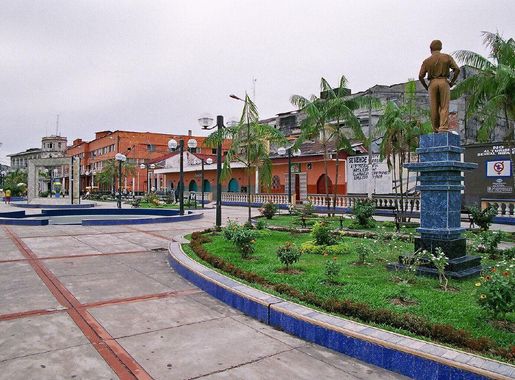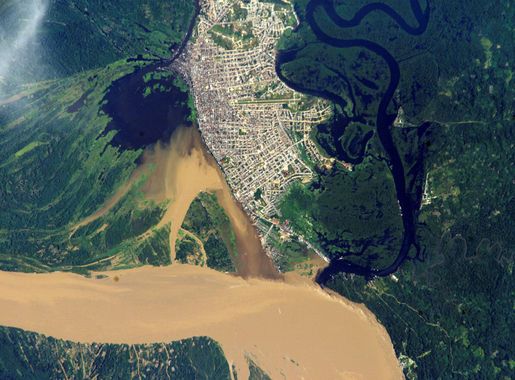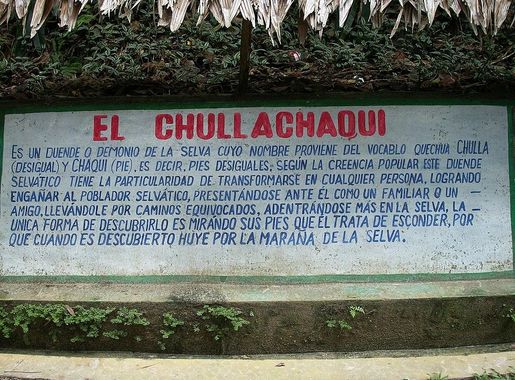
The Heartbeat of Iquitos: Centro
Discover the vibrant essence of Iquitos in Centro, where colonial charm meets Amazonian culture, offering an unforgettable blend of history, cuisine, and adventure.
Welcome to Centro, the vibrant nucleus of Iquitos, Peru. This bustling neighbourhood is a curious blend of colonial charm and Amazonian culture, making it an unmissable stop for any traveler. The streets are lined with historic buildings, each narrating a story of Iquitos' rich past, from the rubber boom era to its modern-day dynamism. As you wander through the Centro, you will be captivated by the architectural marvels like the Iron House, designed by the legendary Gustave Eiffel. The grand Plaza de Armas, the heart of the city, is surrounded by lush greenery and is a perfect spot for people-watching and soaking in the local atmosphere. Explore the local markets where you can find a variety of Amazonian crafts, exotic fruits, and unique souvenirs. The Belen Market, in particular, is an experience in itself, offering a glimpse into the daily lives of the locals. For those interested in exploring the culinary scene, Centro is home to some of the best eateries in Iquitos. Relish the local delicacies such as 'juanes' and 'tacacho' in the many restaurants and street food stalls scattered around the neighbourhood. Centro is also a gateway to adventure, with numerous tour operators offering excursions into the Amazon Rainforest. Whether you are a history buff, a food lover, or an adventurer, Centro has something for everyone. Its lively streets, friendly locals, and rich cultural tapestry make it a must-visit destination in Iquitos.
Local tips in Centro
- Visit Plaza de Armas during the evening to experience local life and street performances.
- Explore Belen Market early in the morning for the freshest produce and unique Amazonian products.
- Carry cash as many local shops and eateries do not accept credit cards.
- Wear comfortable walking shoes as the streets of Centro are best explored on foot.
- Book Amazon Rainforest tours in advance to ensure availability and the best rates.
The Heartbeat of Iquitos: Centro
Welcome to Centro, the vibrant nucleus of Iquitos, Peru. This bustling neighbourhood is a curious blend of colonial charm and Amazonian culture, making it an unmissable stop for any traveler. The streets are lined with historic buildings, each narrating a story of Iquitos' rich past, from the rubber boom era to its modern-day dynamism. As you wander through the Centro, you will be captivated by the architectural marvels like the Iron House, designed by the legendary Gustave Eiffel. The grand Plaza de Armas, the heart of the city, is surrounded by lush greenery and is a perfect spot for people-watching and soaking in the local atmosphere. Explore the local markets where you can find a variety of Amazonian crafts, exotic fruits, and unique souvenirs. The Belen Market, in particular, is an experience in itself, offering a glimpse into the daily lives of the locals. For those interested in exploring the culinary scene, Centro is home to some of the best eateries in Iquitos. Relish the local delicacies such as 'juanes' and 'tacacho' in the many restaurants and street food stalls scattered around the neighbourhood. Centro is also a gateway to adventure, with numerous tour operators offering excursions into the Amazon Rainforest. Whether you are a history buff, a food lover, or an adventurer, Centro has something for everyone. Its lively streets, friendly locals, and rich cultural tapestry make it a must-visit destination in Iquitos.
Iconic landmarks you can’t miss
Iquitos Square
Experience the vibrant heart of Iquitos at Iquitos Square, a lush park surrounded by rich culture and welcoming locals.

Plaza 28 De Julio
Discover the vibrant charm of Plaza 28 De Julio in Iquitos, Peru, a city park that offers relaxation, culture, and local flavors amidst historical beauty.

Mercado Belén
Experience the vibrant culture and local flavors at Mercado Belén, a must-visit market in the heart of Iquitos, Peru.

Casa de Fierro
Discover the rich flavors and historic charm of Casa de Fierro, a must-visit restaurant in Iquitos that showcases authentic Peruvian cuisine.

Boat Museum
Discover the unique maritime heritage of the Amazon at the Boat Museum in Iquitos, where history and culture come alive.

St. John the Baptist Cathedral, Iquitos
Discover the architectural splendor and serene ambiance of St. John the Baptist Cathedral, a must-see tourist attraction in the heart of Iquitos, Peru.
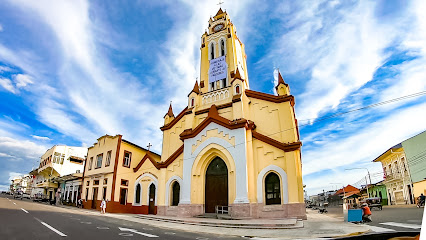
Iquitos Capital
Explore the essence of the Amazon at the Iquitos Capital Museum, where culture, history, and nature converge in a vibrant tapestry of experiences.

Amazon Experience
Experience the magic of the Amazon rainforest with immersive tours, cozy lodging, and rich cultural interactions at the Amazon Experience in Iquitos.

Old Hotel Palace
Discover the historic Old Hotel Palace in Iquitos, a stunning architectural marvel and cultural landmark reflecting the richness of Amazonian heritage.

Casa Cohen
Explore Casa Cohen, a historical landmark in Iquitos that showcases the beauty and rich heritage of the Amazon region's rubber boom era.
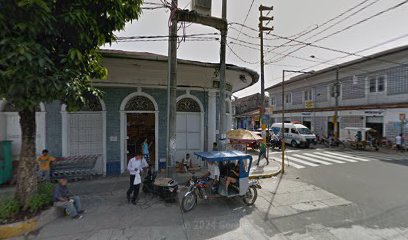
Unmissable attractions to see
Plaza 28 De Julio
Discover the vibrant social hub of Plaza 28 De Julio in Iquitos, Peru, where culture, nature, and community come together in a picturesque setting.
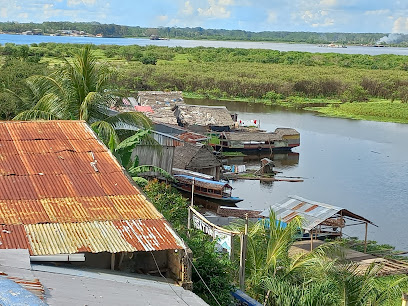
Mercado Belén
Explore the lively Mercado Belén in Iquitos, where vibrant local culture and unique Amazonian crafts come together in a colorful market experience.

Boat Museum
Explore the Boat Museum in Iquitos for a captivating journey into Amazonian maritime heritage and culture.
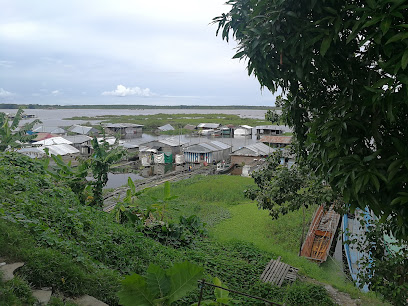
Complejo turístico de Quistococha
Discover the enchanting Complejo Turístico de Quistococha in Iquitos, where nature and wildlife come alive in the heart of the Amazon rainforest.

Iquitos Capital
Explore Iquitos Capital, an Amazonian gem where culture, history, and nature converge in a vibrant setting.
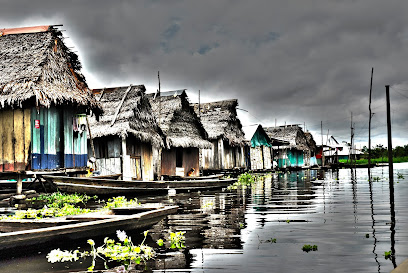
Amazon Experience
Explore the heart of the Amazon rainforest with the Amazon Experience – a perfect mix of adventure, culture, and nature.

Mi Museo Iquitos
Explore the vibrant history and culture of Iquitos at Mi Museo Iquitos, where the stories of the Amazon come alive through fascinating exhibits.

Museo De Iquitos
Explore the rich cultural heritage of the Amazon at Museo De Iquitos, a local history museum showcasing indigenous tribes and the rubber boom era.
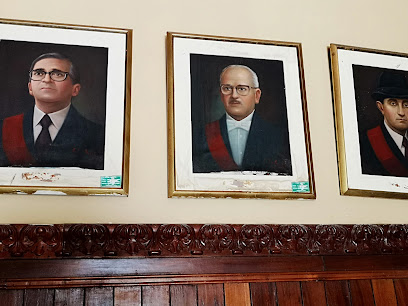
Essential places to dine
Al Frio y al Fuego
Experience authentic Peruvian cuisine at Al Frio y al Fuego, where every dish tells a story and every bite is a celebration of flavor.

Blanquita
Discover the authentic taste of Peru at Blanquita in Iquitos – where every dish tells a story.

La Casa De Las Enchiladas
Experience authentic Mexican flavors at La Casa De Las Enchiladas in Iquitos – where every dish tells a story.

Embarcadero Restaurante Al Frío y al Fuego
Discover exquisite flavors and stunning river views at Embarcadero Restaurante Al Frío y al Fuego in Iquitos.

Restaurante Fitzcarraldo
Discover the rich flavors of Peruvian cuisine at Restaurante Fitzcarraldo in Iquitos - an unforgettable dining experience awaits you.

THE YELLOW ROSE OF TEXAS RESTAURANT
Discover diverse flavors at The Yellow Rose of Texas Restaurant in Iquitos—where American meets Belgian, Chinese, and Russian cuisines.

Amazon Bistro
Experience authentic Amazonian cuisine at Amazon Bistro in Iquitos - where every dish tells a story.

Las Terrazas Iquitos
Experience the vibrant flavors of Peru at Las Terrazas Iquitos - a must-visit gastropub with stunning river views.

Huasaí Restaurant
Discover authentic Peruvian flavors at Huasaí Restaurant in Iquitos – a delightful dining experience celebrating Amazonian cuisine.

Chef Paz Restaurant
Experience authentic Peruvian cuisine at Chef Paz Restaurant in Iquitos - a local favorite offering fresh Amazonian flavors.

FRAGATA Restobar
Experience the vibrant culinary scene at FRAGATA Restobar in Iquitos - where local flavors meet global cuisine in a lively gastropub setting.

Periko's Restaurant — Cevicheria
Experience authentic Peruvian cuisine at Iquitos' favorite cevicheria—where every dish tells a story.

Mikhuna Restaurant Iquitos
Discover authentic Peruvian flavors at Mikhuna Restaurant in Iquitos - where every dish tells a story.

Trattoria Itaya
Experience authentic Italian cuisine at Trattoria Itaya in Iquitos—where every dish tells a story.

Qué tal Lomazo Restobar
Experience unique flavors at Qué tal Lomazo Restobar in Iquitos - where local ingredients meet innovative cuisine in a vibrant setting.
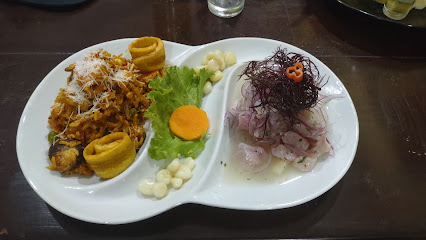
Markets, malls and hidden boutiques
Falabella Iquitos
Explore the vibrant shopping experience at Falabella Iquitos, where local culture meets modern retail in a stunning setting.
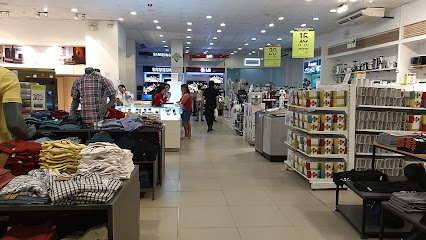
Centro Comercial Quispe
Discover the vibrant shopping scene at Centro Comercial Quispe in Iquitos, where local culture meets diverse retail offerings.

Mall Aventura Iquitos
Experience a shopping and entertainment paradise at Mall Aventura Iquitos, where culture, cuisine, and commerce converge in a vibrant setting.

Galerias Quispe
Discover the colorful and vibrant Galerias Quispe in Iquitos, where shopping meets culture and local delicacies await.

Centro Comercial El Monarca
Explore Centro Comercial El Monarca in Iquitos for a unique shopping experience filled with local flair and diverse retail options.
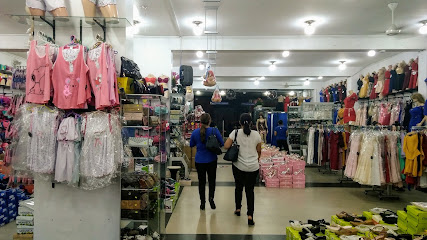
PANDA PARTY
Experience the vibrant shopping atmosphere at Panda Party in Iquitos, where local culture meets global brands in a bustling hypermarket.

CADENA DE TIENDAS MAS MAS
Discover a vibrant shopping oasis in Iquitos at CADENA DE TIENDAS MAS MAS, where local culture meets diverse retail experiences.

Tiendas Él - Iquitos
Discover a stylish blend of men's and youth clothing at Tiendas Él in Iquitos, where local fashion meets affordability and quality.

SHOP STORE - IQUITOS
Explore the vibrant fashion scene at Iquitos' top clothing store, featuring unique local garments and accessories that embody Amazonian culture.

Queens boutique
Explore Queens Boutique in Iquitos for a unique shopping experience featuring stylish women's clothing, trendy dresses, and chic footwear.
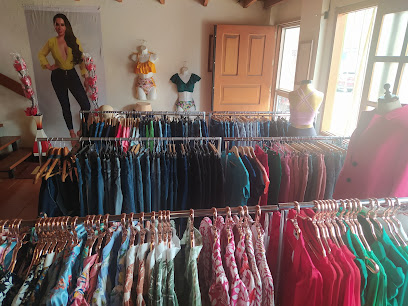
Essential bars & hidden hideouts
Las Terrazas Iquitos
Experience the best of Iquitos at Las Terrazas, where local cuisine meets an inviting atmosphere and breathtaking river views.

Arandú Bar
Discover the vibrant nightlife of Iquitos at Arandú Bar, where refreshing drinks and local culture come together to create an unforgettable experience.

A Chelear
Discover the vibrant nightlife of Iquitos at A Chelear, where delicious drinks and a lively atmosphere await every evening.

Pishcota's Bar
Experience the vibrant nightlife of Iquitos at Pishcota's Bar, where local flavors and lively atmosphere come together for an unforgettable evening.
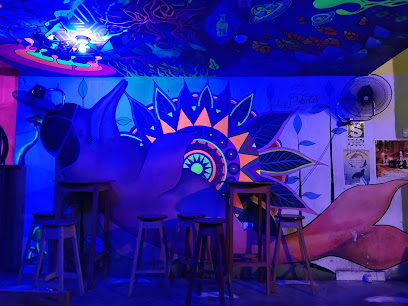
Mezclas
Experience the vibrant nightlife of Iquitos at Mezclas, where local flavors and lively atmosphere come together for an unforgettable evening.
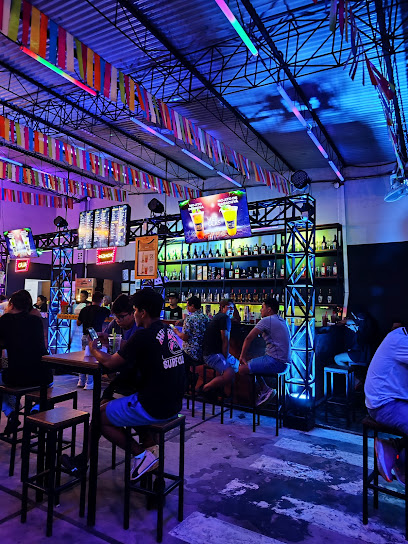
Yurus Restobar
Experience the flavors of Peru at Yurus Restobar, your go-to destination for grilled delights and refreshing drinks in Iquitos.

Video Pub El Escondite
Experience the vibrant nightlife of Iquitos at Video Pub El Escondite, a lively bar offering local drinks and a friendly atmosphere.
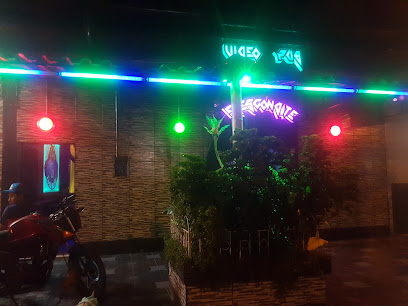
El Musmuqui
Experience the vibrant nightlife of Iquitos at El Musmuqui, a local bar offering a unique blend of drinks and culture in the heart of the Amazon.

Sativa
Discover tranquility at Sativa, a serene bar in Iquitos, where nature meets relaxation and exquisite drinks await.
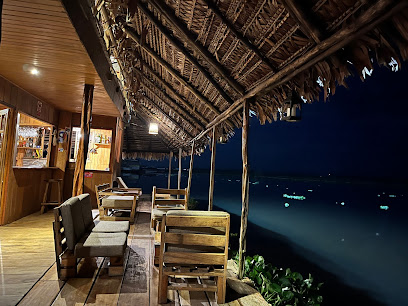
BuleVar Restobar Iquitos
Discover the vibrant flavors of Iquitos at BuleVar Restobar, a gastropub offering a delightful fusion of local and international cuisine.

Local Phrases
-
- HelloHola
[oh-lah] - GoodbyeAdiós
[ah-dee-ohs] - YesSí
[see] - NoNo
[noh] - Please/You're welcomePor favor/De nada
[por fah-vor/deh nah-dah] - Thank youGracias
[grah-see-ahs] - Excuse me/SorryDisculpe/Lo siento
[dees-kool-pe/loh see-en-toh] - How are you?¿Cómo estás?
[koh-moh ehs-tahs] - Fine. And you?Bien. ¿Y tú?
[byen. ee too] - Do you speak English?¿Hablas inglés?
[ah-blahs een-glehs] - I don't understandNo entiendo
[noh ehn-tee-ehn-doh]
- HelloHola
-
- I'd like to see the menu, pleaseQuisiera ver el menú, por favor
[kee-see-eh-rah behr ehl meh-noo, poor fah-vor] - I don't eat meatNo como carne
[noh koh-moh kahr-neh] - Cheers!¡Salud!
[sah-lood] - I would like to pay, pleaseQuisiera pagar, por favor
[kee-see-eh-rah pah-gahr, poor fah-vor]
- I'd like to see the menu, pleaseQuisiera ver el menú, por favor
-
- Help!¡Ayuda!
[ah-yoo-dah] - Go away!¡Vete!
[veh-teh] - Call the Police!¡Llama a la policía!
[yah-mah ah lah poh-lee-see-ah] - Call a doctor!¡Llama a un médico!
[yah-mah ah oon meh-dee-koh] - I'm lostEstoy perdido
[ehs-toy pehr-dee-doh] - I'm illEstoy enfermo
[ehs-toy ehn-fehr-moh]
- Help!¡Ayuda!
-
- I'd like to buy...Me gustaría comprar...
[meh goos-tah-ree-ah kohm-prahr] - I'm just lookingSolo estoy mirando
[soh-loh ehs-toy meer-ahn-doh] - How much is it?¿Cuánto cuesta?
[kwan-to kwehs-tah] - That's too expensiveEso es muy caro
[eh-soh ehs mwee kahr-oh] - Can you lower the price?¿Puede bajar el precio?
[pweh-deh bah-har ehl pree-seh-oh]
- I'd like to buy...Me gustaría comprar...
-
- What time is it?¿Qué hora es?
[keh oh-rah ehs] - It's one o'clockEs la una
[ehs lah oo-nah] - Half past (10)Media hora (10)
[meh-dee-ah oh-rah (deez)] - MorningMañana
[mah-nyah-nah] - AfternoonTarde
[tahr-deh] - EveningNoche
[noh-cheh] - YesterdayAyer
[ah-yehr] - TodayHoy
[oy] - TomorrowMañana
[mah-nyah-nah] - 1Uno
[oo-noh] - 2Dos
[dohs] - 3Tres
[trehs] - 4Cuatro
[kwah-troh] - 5Cinco
[seen-koh] - 6Seis
[says] - 7Siete
[syeh-teh] - 8Ocho
[oh-choh] - 9Nueve
[nwheh-veh] - 10Diez
[dyehs]
- What time is it?¿Qué hora es?
-
- Where's a/the...?¿Dónde está...?
[dohn-deh ehs-tah] - What's the address?¿Cuál es la dirección?
[kwal ehs lah dee-rehk-syon] - Can you show me (on the map)?¿Puedes mostrarme (en el mapa)?
[pweh-dehs mohs-trar-meh (ehn ehl mah-pah)] - When's the next (bus)?¿Cuándo es el próximo (autobús)?
[kwan-doh ehs ehl prohk-see-moh (ow-toh-booos)] - A ticket (to ....)Un boleto (a ....)
[oon boh-leh-toh (ah)]
- Where's a/the...?¿Dónde está...?
History of Centro
-
Iquitos was officially founded in 1864, but its history dates back to centuries earlier when it was inhabited by indigenous tribes such as the Boras and the Huitotos. The name 'Iquitos' is believed to be derived from the native word for 'the place of the Iquitos people'. This rich cultural heritage laid the groundwork for the future development of the city.
-
The late 19th and early 20th centuries marked a significant period for Centro in Iquitos during the rubber boom. The demand for rubber skyrocketed, leading to a massive influx of wealth and migrants, primarily from Europe and Asia. This era brought prosperity to Iquitos, transforming it into a bustling hub of commerce and culture, with the construction of grand mansions and public buildings that reflected the new wealth.
-
During the rubber boom, Iquitos became a cultural melting pot. Immigrants from various countries, including the Chinese and the Italians, settled in the area, contributing to the local cuisine, traditions, and commerce. This diversity is still evident today in the local markets and festivals, creating a vibrant cultural landscape in Centro.
-
By the 1920s, the rubber industry began to decline due to the introduction of synthetic rubber and the depletion of rubber trees. The economic downturn led to a significant population decrease in Iquitos, impacting Centro. Many grand buildings fell into disrepair, but efforts in recent decades have aimed to restore these historical sites and revitalize the neighborhood.
-
Today, Centro is a bustling area that reflects the historical significance of Iquitos. It is home to the iconic Plaza de Armas, the Iron House (Casa de Fierro), designed by Gustave Eiffel, and numerous markets and shops showcasing local crafts and cuisine. The neighborhood serves as a reminder of the city's rich history while continuing to evolve as a vibrant urban center.
Centro Essentials
-
Centro is centrally located in Iquitos, making it accessible from various neighborhoods. You can reach Centro by taking a mototaxi, which is a popular and economical option. From other neighborhoods like Belén or San Juan, the ride typically costs around 5-10 soles and takes about 10-20 minutes depending on traffic. Alternatively, local buses and combis also connect to Centro, with routes frequently running throughout the day.
-
Centro is best explored on foot, as many attractions are within walking distance. For longer distances, mototaxis and taxis are readily available and relatively inexpensive. Public buses are less common within Centro, but you may find some routes that connect to outer neighborhoods. Bicycles are also a good option for those looking to explore at a leisurely pace; you can often rent one from local shops.
-
Centro is generally safe for tourists, but visitors should remain vigilant, particularly in crowded areas. Avoid walking alone at night, especially in poorly lit streets. Areas like the outskirts of Belén and some parts of San Juan may have higher crime rates, particularly for petty theft, so it is advisable to exercise caution in these neighborhoods.
-
In case of emergency, dial 105 for police assistance or 106 for fire services in Peru. For medical emergencies, the local hospital is Hospital Iquitos, located in Centro. It is advisable to have travel insurance that covers medical emergencies. Pharmacies are also available in Centro for minor health issues and over-the-counter medications.
-
Fashion: Do dress modestly, especially when visiting local religious sites. Don't wear excessively revealing clothing. Religion: Do respect local customs and traditions; it's polite to ask before taking photos in religious places. Public Transport: Do be courteous on public transport, and give your seat to elderly passengers; don’t eat or drink on buses. Greetings: Do greet people with a friendly smile or handshake; don’t be overly formal. Eating & Drinking: Do try local dishes and accept food offerings graciously; don’t refuse hospitality, as it can be seen as disrespectful.
-
To experience Centro like a local, visit the bustling Plaza de Armas, where you can enjoy live music and local artisan markets. Engaging with local vendors can lead to unique cultural exchanges. Try to take a boat tour from the nearby port, which provides a different perspective of the city. Don't forget to sample local delicacies at street food stalls, but ensure they are busy with local customers to ensure freshness.
Nearby Cities to Centro
-
Things To Do in Macas
-
Things To Do in Tena
-
Things To Do in Cuenca
-
Things To Do in Ambato
-
Things To Do in Loja
-
Things To Do in Quito
-
Things To Do in Ibarra
-
Things To Do in Pasto
-
Things To Do in Otavalo
-
Things To Do in Mindo
-
Things To Do in Guayaquil
-
Things To Do in Neiva
-
Things To Do in Popayán
-
Things To Do in Huaraz
-
Things To Do in Trujillo



